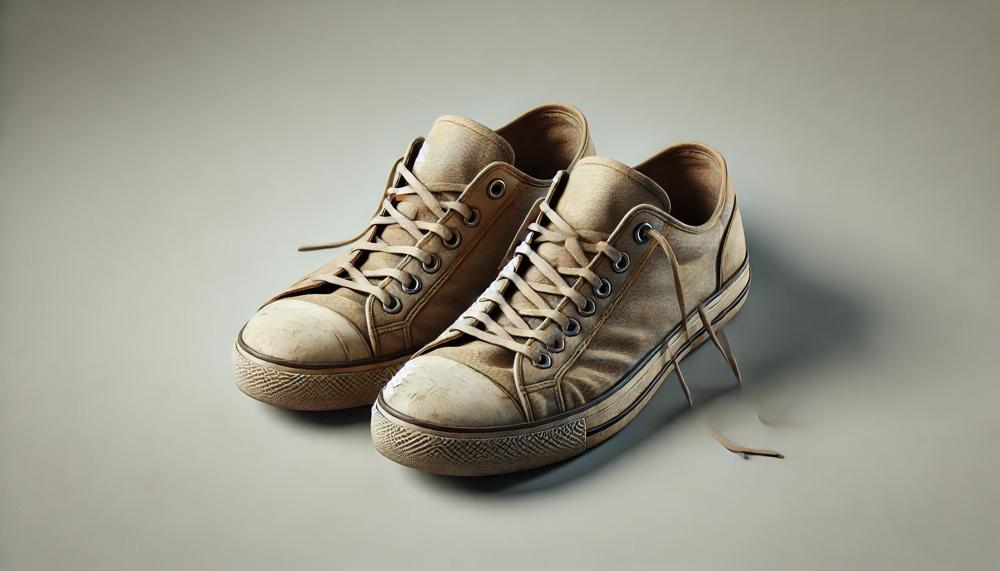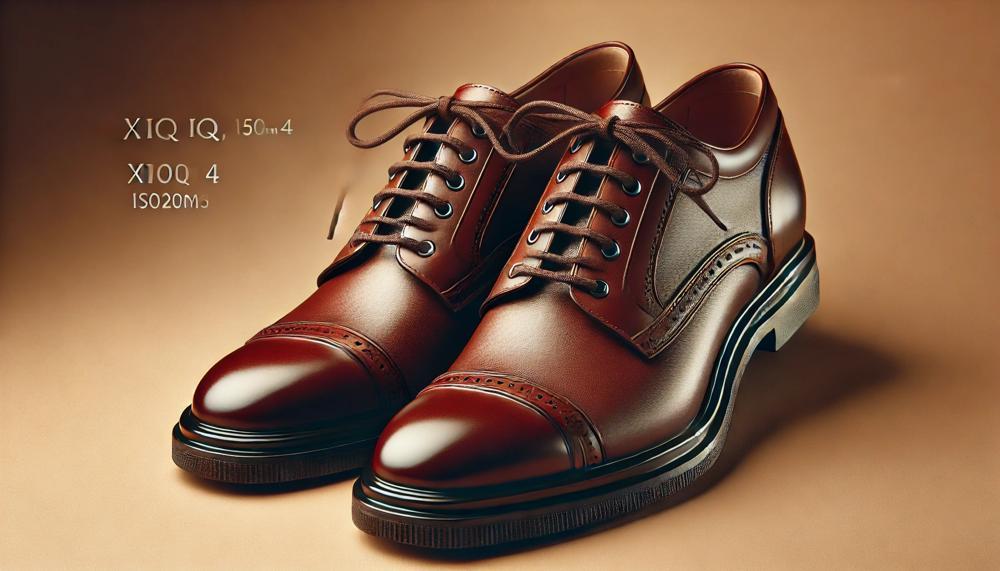Can you effectively clean second-hand shoes and restore them to their former glory? Absolutely, yes. Refreshing a pair of pre-loved shoes is not only possible but can also extend the life of your footwear and ensure they’re safe and hygienic to wear. This introductory guide will walk you through essential steps and tips to make your used shoes look and feel almost new.
Why should you consider cleaning your second-hand shoes thoroughly? Here are the key points you’ll discover:
- Safe Cleaning Methods: Understand the right way to clean delicate shoes like leather and suede versus more durable types like sneakers.
- Disinfecting Techniques: Learn why and how to disinfect used shoes to eliminate harmful bacteria, fungi, and viruses.
- Material-Specific Care: Get tips on specific products and techniques for different materials, ensuring you don’t damage your newfound treasures.
Join us as we dive into effective strategies to clean and rejuvenate your second-hand shoes, making them a worthy addition to your wardrobe. Whether they’re from a thrift store or a vintage shop, our guide will equip you with the knowledge to give those shoes a second chance at life, combining hygiene with sustainability. Read on to transform your pre-owned finds into pristine, comfortable footwear.
How to Disinfect Inside of Shoes?
Contents
- 1 How to Disinfect Inside of Shoes?
- 2 How to Clean Second Hand Leather Shoes?
- 3 How to Disinfect Shoes from the Thrift Store?
- 4 How Do You Clean an Old Pair of Shoes?
- 5 Is Baking Soda Good to Clean Shoes?
- 6 Can You Use Hand Sanitizer to Clean Shoes?
- 7 How Do You Get Rid of Bacteria in Shoes?
- 8 Can I Machine Wash My Second-Hand Shoes?
- 9 How to Disinfect Shoes from the Thrift Store?
- 10 How Do You Clean an Old Pair of Shoes?
- 11 Is Baking Soda Good to Clean Shoes?
- 12 Can You Use Hand Sanitizer to Clean Shoes?
- 13 How Do You Get Rid of Bacteria in Shoes?
- 14 Can I Machine Wash My Second-Hand Shoes?
- 15 Conclusion
Disinfecting second-hand shoes is vital to prevent the spread of germs and to ensure they are safe and fresh for wear. Here’s a step-by-step guide on how to thoroughly clean and disinfect various types of used shoes:
General Cleaning
- Begin by removing any loose dirt and debris with a soft brush or cloth. For sneakers, you can use a toothbrush to get into small crevices.
Choosing a Disinfectant
- Depending on the shoe material, select an appropriate disinfectant:
- For durable materials like canvas and synthetic leather, a solution of bleach and water (1 part bleach to 5 parts water) can be used.
- For delicate materials such as genuine leather and suede, opt for a gentle cleaner like diluted rubbing alcohol or a specialty suede cleaner.
Application Methods
- Spray or wipe the chosen disinfectant on the inside of the shoes, paying special attention to areas that come into direct contact with the feet, such as insoles and inner linings.
Drying and Deodorizing
- After disinfecting, allow the shoes to dry completely in a well-ventilated area to prevent moisture buildup, which can lead to mold. Sprinkle baking soda inside the shoes overnight to absorb any residual odors and moisture.
How to Clean Second Hand Leather Shoes?
To properly clean second-hand leather shoes, follow these steps:
Remove Loose Dirt and Debris
Using a soft brush or an old toothbrush, gently remove any loose dirt and debris from the surface of the shoe. Pay attention to crevices and seams while scrubbing away any dirt.
Wipe with a Damp Cloth
For leather shoes, wipe the surface with a clean, damp cloth to remove any remaining dirt or stains. Be sure to use a clean cloth and avoid using excess water, as this can damage the leather.
Condition the Leather
To keep the leather soft and supple, apply a small amount of leather cleaner or conditioner onto a clean cloth and massage it into the leather in circular motions. This will help to remove any scuffs and stains while also protecting the leather.
Use a Suede Cleaning Block
If there are scuffs or stains on suede shoes, use a suede cleaning block to gently remove them. Be careful not to rub too hard, as this can damage the delicate suede material.
Air Dry
After conditioning, allow the shoes to air dry naturally. Do not use any heat sources, such as a hair dryer, as this can damage the leather.
Wipe Down Dress Shoes
For dress shoes, wipe down the surface with a clean cloth dampened with soapy water. Pay close attention to any stains or scuffs and gently scrub them away.
By following these steps, you can properly clean your second-hand leather shoes and restore their freshness and appearance. Additionally, it is important to regularly clean and disinfect used shoes for hygiene purposes, especially when buying from thrift stores.

How to Disinfect Shoes from the Thrift Store?
Cleaning and disinfecting thrift store shoes is crucial to ensure they are clean and safe to wear. Here are some of the best methods for disinfecting thrift store shoes:
- Assess the condition of the shoes: Before cleaning, it is important to assess the condition of the thrifted shoes. Check for any visible damage or stains and determine the material of the shoes.
- Combat odors: To combat odors, use baking soda or dryer sheets. Sprinkle baking soda inside the shoes and let it sit overnight. Alternatively, place dryer sheets inside the shoes and leave them overnight.
- Disinfect with rubbing alcohol or hydrogen peroxide: For thrifted shoes with fungal or bacterial infections, use rubbing alcohol or hydrogen peroxide to disinfect them. Wipe down the inside of the shoes with a cloth soaked in either solution and let them air dry completely before wearing.
- Wash in the washing machine: Athletic shoes and canvas sneakers can be washed in a washing machine on a gentle cycle with mild detergent. Allow them to air dry completely before wearing.
- Use disinfectant spray: To eliminate bacteria and odors from thrifted shoes, use a disinfectant spray specifically made for shoes. Spray the inside of the shoes and let them air dry.
- Clean with warm water and soap: For delicate materials like leather and suede, use a damp cloth and mild soap to clean off any dirt or stains. Wipe down with a towel and allow them to air dry.
- Use baking soda or deodorizing spray: To remove bad smells from thrifted shoes, sprinkle baking soda inside them or use a deodorizing shoe spray.
- Avoid using bleach spray: Unless the thrifted shoes are white and can withstand it, avoid using bleach spray as it may damage the material.
- Wipe down with rubbing alcohol or hydrogen peroxide: To disinfect thrifted shoes, wipe down the inside with rubbing alcohol or hydrogen peroxide and allow them to air dry completely before wearing.
- Follow care labels and manufacturer’s instructions: Always check the care label and follow the manufacturer’s instructions for best results. This is especially important for delicate materials like leather and suede.
By following these methods, you can effectively clean and disinfect thrift store shoes, ensuring they are clean and safe to wear.
How Do You Clean an Old Pair of Shoes?
Cleaning old shoes isn’t just about making them look good; it’s about preserving their structure and enhancing their lifespan. To effectively clean old shoes and restore their appearance, here are some simple yet comprehensive methods:
- Initial Cleaning: Begin by removing any loose dirt and debris. A soft-bristled brush or a damp cloth works well for this. Ensure that the brush is gentle to avoid damaging the shoe surface.
- Creating a Cleaning Solution: Mix warm water with a mild detergent or soap. This solution is suitable for most shoe materials, including canvas and fabric. For leather shoes, consider using a cleaner specifically designed for leather.
- Scrubbing the Shoes: Use a soft brush or a cloth to apply the cleaning solution. Gently scrub the shoes in a circular motion to ensure you are not too harsh on the material. For stubborn stains on materials like suede or nubuck, specialized suede cleaners and a suede brush should be used to avoid damage.
- Rinsing: Once the shoes are cleaned, rinse them with clean water to remove any soap residue. It’s crucial to do this thoroughly to prevent any potential damage from drying soap.
- Drying: Air dry the shoes at room temperature, away from direct sunlight and heat sources. This helps prevent the material from warping or the colors from fading.
- Conditioning Leather: For leather shoes, after cleaning, apply a leather conditioner. This helps maintain the suppleness of the leather and prevents cracks.
- Storage: Store the shoes in a cool, dry place to avoid moisture build-up which can lead to mildew. Avoid wrapping them in plastic as this can trap moisture; instead, use breathable materials like shoe bags made of fabric.
Here’s a summary table of cleaning methods tailored for different shoe materials:
| Material | Cleaning Technique | Product Suggestion |
| Leather | Use leather cleaner, condition after drying | Leather Cleaner |
| Suede/Nubuck | Gentle brushing with suede brush, use suede cleaner for stains | Suede Cleaner |
| Canvas/Fabric | Warm soapy water, scrub gently, rinse thoroughly | Canvas Shoe Cleaner |
Is Baking Soda Good to Clean Shoes?
Yes, baking soda can effectively clean second-hand shoes. It is particularly efficient as a deodorizer and mild cleaning agent.
Baking soda, or sodium bicarbonate, is renowned for its natural deodorizing properties. When applied to shoes, it neutralizes odors by balancing pH levels, thereby eliminating unpleasant smells instead of merely masking them. Here’s a simple table detailing how baking soda can be used to spruce up second-hand shoes:
| Step | Action | Outcome |
| 1 | Spread baking soda inside the shoes | Neutralizes odors |
| 2 | Leave overnight | Allows baking soda to absorb moisture and odor |
| 3 | Shake off excess in the morning | Removes residual powder and odor |
Besides just odor removal, baking soda can help in lifting light stains from the shoe fabric. For tougher stains, it can be mixed with a little water to create a paste, applied gently with a toothbrush or soft cloth, then wiped off, which helps in maintaining the integrity of the materials, especially in second-hand shoes which might be more delicate or worn.
Can You Use Hand Sanitizer to Clean Shoes?
Yes, hand sanitizer can be effective for cleaning second-hand shoes, particularly for sanitizing and dealing with minor surface dirt. However, it’s paramount to apply it judiciously to avoid potential damage to the shoe materials.
Hand sanitizers typically contain alcohol, which can disinfect but might also dry out or damage sensitive materials like leather or suede. For routine cleaning and odor control, other methods such as baking soda are recommended, which are gentler on various materials.
For a clear understanding, here’s a table illustrating the pros and cons of using hand sanitizer on shoes:
| Pros | Cons |
| Quick sanitation | Can dry out materials like leather |
| Removes minor surface stains | Potential damage to delicate fabrics |
| Readily available | May not remove deep stains or dirt |
In summary, while hand sanitizer can serve as a quick fix for sanitizing and lightly cleaning second-hand shoes, it should not be relied upon for deep cleaning or as a regular cleaning method, especially for shoes made of delicate materials. Instead, consider using specialized cleaning products designed for shoe care, which ensure both effectiveness and safety.
How Do You Get Rid of Bacteria in Shoes?
To effectively remove bacteria from second-hand shoes, employing a variety of cleaning and sanitizing techniques is crucial. Here’s a guide on some efficient methods:
- Disinfectant Sprays: Use sprays designed for footwear to kill bacteria and eliminate odours. Sprays that contain antibacterial properties are best for this purpose.
- Antibacterial Wipes: Convenient for quick cleans, antibacterial wipes can be used to wipe down the interior surfaces of the shoes, focusing on the soles where bacteria often accumulate.
- Rubbing Alcohol or Hydrogen Peroxide: Apply a solution of rubbing alcohol or hydrogen peroxide to the inside of the shoes using a clean cloth. These substances are effective at killing bacteria and are generally safe for various shoe materials.
- Proper Drying: Ensure the shoes are thoroughly dry after cleaning to prevent the growth of new bacteria. Leave them in a well-ventilated area or near a fan.
Using these methods not only keeps the shoes fresh but also extends their wearable life by maintaining a hygienic environment inside your footwear.
Can I Machine Wash My Second-Hand Shoes?
Yes, you can machine wash your second-hand shoes, but with caveats. Not all materials are suitable for the washing machine, and careful consideration of the type and condition of the shoes is essential.
Based on the research and previous cleaning methods discussed, while machine washing is a feasible option for certain materials like canvas, cotton, nylon, and polyester, it’s crucial to adopt the right approach to prevent damage. Here’s a detailed look at how to safely machine wash your second-hand shoes:
- Material Check: First, ensure your shoes are made from machine-washable materials. Avoid washing leather, wool, or suede in a machine as these materials can be damaged by water and detergent.
- Preparation: Remove any loose dirt or debris. If the shoes have removable insoles, take them out and wash them separately to ensure thorough cleaning.
- Protection: Place your shoes inside a mesh garment bag to shield them during the wash cycle. This helps prevent the shoes from banging around in the machine and potentially damaging both the footwear and the appliance.
- Washing Settings: Use a gentle cycle with cold water and a mild detergent. Hot water can warp the shape of the shoes and weaken the glue that holds them together.
- Drying: Never put your second-hand shoes in the dryer as high heat can damage them. Instead, air dry them away from direct sunlight and heat sources to maintain their shape and integrity.
Table of Safe Washing Instructions for Second-Hand Shoes:
| Material | Machine Wash | Additional Care |
| Canvas, Cotton, Nylon, Polyester | Yes | Use mesh bag, gentle cycle, cold water |
| Leather, Wool, Suede | No | Spot clean or hand wash only |
| Removable Insoles | Yes | Wash separately in a mesh bag |
For a deep clean that extends the life of your shoes while ensuring they look their best, consider alternating between machine washing (where appropriate) and other gentler cleaning methods like spot cleaning with mild soap or using specialised shoe cleaners. This balanced approach helps maintain both the appearance and the durability of your second-hand treasures.
How to Disinfect Shoes from the Thrift Store?
Disinfecting shoes from a thrift store involves both cleaning and eliminating germs to ensure they’re safe and fresh for wear. Here’s a guide tailored for different types of shoes:
General Disinfection
- Baking Soda: Sprinkle inside the shoes and leave overnight to neutralize odors.
- Deodorizing Spray: Use sprays such as Lysol to kill bacteria and give a fresh scent.
- Rubbing Alcohol or Hydrogen Peroxide: Apply using a spray bottle to target bacteria and fungi, especially on the insoles.
Cleaning Based on Material
- Fabric Shoes: Can often be washed in a machine with mild detergent on a gentle cycle.
- Leather Shoes: Wipe with a damp cloth mixed with a mild soap solution; dry immediately with a soft cloth.
- Suede Shoes: Use a special suede brush to remove dirt and apply a suede protector spray for further cleaning.
Special Techniques
- Clorox Wipes: Effective for quickly sanitizing and removing stains from sneakers.
- Damp Cloth with Alcohol: Wipe the exterior and insoles, useful for shoes that cannot be machine washed.
How Do You Clean an Old Pair of Shoes?
To rejuvenate an old pair of shoes and restore their former glory, follow these meticulous steps:
- Preparation: Begin by removing any loose dirt with a soft brush. This avoids scratching the material when washing.
- Cleaning Solution: Prepare a gentle cleaning solution. Mix warm water with a few drops of mild detergent or specialized shoe cleaner.
- Washing: Dip a soft brush or cloth in the cleaning solution and gently scrub the shoes. Pay extra attention to stains and heavily soiled areas.
- Rinsing: Wipe the shoes with a damp cloth to remove any soap residue.
- Drying: Allow the shoes to air dry at room temperature, away from direct heat sources which can damage the material.
- Conditioning: For leather shoes, apply a conditioner to keep the leather supple and prevent cracking.
- Deodorizing: Sprinkle baking soda inside the shoes and leave it overnight to eliminate odors. Vacuum it out the next morning.
- Final Touches: Replace or clean the laces by soaking them in the cleaning solution and then rinsing them.
Is Baking Soda Good to Clean Shoes?
Yes, baking soda is an excellent choice for cleaning second-hand shoes and eliminating odors. Its natural deodorizing properties make it highly effective for freshening up previously worn footwear.
Baking soda, or sodium bicarbonate, is a mild alkaline powder that is adept at removing stains and neutralizing foul smells. When applied to second-hand shoes, it acts by absorbing moisture and odors, making the shoes more pleasant to wear. The simplicity of the cleaning process adds to its appeal for shoe enthusiasts looking to revitalize their second-hand finds.
Here’s a straightforward guide on how to use baking soda for cleaning shoes:
| Step | Action | Result |
| 1 | Spread a small amount of baking soda evenly inside each shoe. | The baking soda covers the interior surface area. |
| 2 | Leave the shoes overnight. | Baking soda absorbs moisture and odors. |
| 3 | Shake out the excess powder in the morning. | Shoes are cleaner and smell fresher. |
For enhanced effectiveness, consider repeating the process if the shoes are particularly smelly or soiled. It’s a non-toxic and eco-friendly solution that spares your wallet while being gentle on your shoes.
Can You Use Hand Sanitizer to Clean Shoes?
Yes, hand sanitizer can be an effective and safe method for cleaning second-hand shoes. Hand sanitizer is a convenient option that not only cleans but also disinfects, making it suitable for quick touch-ups and sanitation when other options like disinfectant sprays or wipes are unavailable.
Here’s a detailed look at the process and considerations for using hand sanitizer on shoes:
- Effectiveness: Hand sanitizers that contain at least 60% alcohol have been proven to kill bacteria and viruses effectively. This can be particularly beneficial for sanitizing the interior and exterior surfaces of second-hand shoes where pathogens might reside.
- Safety: Since most hand sanitizers are formulated to be gentle on skin, they are also safe to use on various shoe materials without damaging them. However, it’s wise to do a spot test on a small, inconspicuous area to ensure that the sanitizer does not affect the color or material of the shoe.
- Convenience: Using hand sanitizer for cleaning shoes offers a quick and easy solution, especially when on the go. It dries quickly, leaving no residue or dampness.
- Limitations: While hand sanitizer is effective for surface cleaning and sanitizing, it is not a substitute for deep cleaning, which might be necessary to remove stubborn stains or built-up dirt.
Here’s a comparative table summarizing the use of hand sanitizer versus other cleaning methods for shoes:
| Method | Effectiveness | Usage |
| Hand Sanitizer | High for sanitizing | Quick surface cleaning |
| Disinfectant Sprays/Wipes | High for sanitizing and cleaning | Thorough cleaning |
| Baking Soda | Medium for cleaning | Deodorizing overnight |
So, hand sanitizer is a viable option for sanitizing second-hand shoes, offering a blend of efficacy, safety, and convenience.
How Do You Get Rid of Bacteria in Shoes?
To effectively remove bacteria from second-hand shoes, various methods can be employed that ensure they are not only clean but safe for wear. Here’s a breakdown of some of the most effective techniques:
- Deodorizing and Disinfectant Sprays: These products are specially formulated to tackle odors while killing bacteria and fungi. Sprays such as Lysol are common and can be directly applied to the interior surfaces of shoes.
- Antibacterial Wipes or Sprays: Regular use of antibacterial solutions can help maintain the cleanliness of shoes by sanitizing areas that come into direct contact with the foot, such as the inner soles.
- Specialized Disinfectant for Thrifted Shoes: Products designed specifically for used footwear can provide a targeted approach to eliminating bacteria and ensuring the shoes are hygienic.
- Proper Drying: After cleaning, shoes should be thoroughly dried to prevent the growth of bacteria that thrive in moist environments. Avoid wearing or storing shoes until they are completely dry.
- Rubbing Alcohol or Hydrogen Peroxide: Applying these solutions with a clean cloth to the inner surfaces of the shoes can be particularly effective. Ensure the shoes are air-dried completely after treatment to maximize effectiveness.
Can I Machine Wash My Second-Hand Shoes?
Yes, you can machine wash second-hand shoes, but caution is paramount. Washing machines can often accommodate shoes, but there’s a knack to ensuring they come out looking good as new without shortening their lifespan.
Here’s a straightforward guide to doing it right:
- Preparation: Remove any surface dirt with a brush. Take out laces and insoles; wash these separately to ensure thorough cleaning.
- Setting the Scene: Use a gentle cycle on your washing machine, cold water, and a mild detergent. Hot water might warp the shape or damage the material of the shoes.
- Protection Tactics: Place your shoes in a mesh laundry bag to avoid them banging around in the drum, which can damage both your shoes and the machine.
- Drying Strategy: Post-wash, don’t tumble dry. Instead, stuff your shoes with newspaper to absorb moisture and maintain shape, and let them air dry away from direct sunlight.
- Considerations for Durability: Frequent machine washing can accelerate wear and tear. Consider spot cleaning or using specialized sprays as an alternative to frequent full washes.
Steps and Precautions:
| Step | Action | Reason |
| Brush off dirt | Use a soft brush to remove loose soil before washing. | Prevents dirt from spreading during the wash. |
| Detach removable parts | Remove laces and insoles. | Ensures thorough cleaning and protects the washing machine. |
| Use protective bags | Place shoes in a mesh laundry bag. | Minimizes impact during the wash cycle, protecting the shoes and washer. |
| Select correct cycle | Set machine to gentle cycle with cold water. | Prevents damage from heat and intense spinning. |
| Air dry | Stuff with newspaper and air dry in a cool, shaded area. | Helps retain shape and prevents shrinkage or warping from heat. |
Conclusion
Cleaning second-hand shoes is like giving them a new lease on life.
As this guide highlights, whether you’re dealing with robust sneakers or delicate leather, the key lies in choosing the right cleaning agents and techniques. Start by removing surface dirt before moving on to specific treatments like disinfecting and conditioning.
Use mild solutions for tough materials and gentler products for sensitive ones. Don’t overlook the importance of drying, which safeguards against damage and mold.
Lastly, regular maintenance, such as using baking soda for deodorization and moisture absorption, ensures your shoes remain in pristine condition. Adopt these strategies to transform your second-hand purchases into cherished, wearable treasures, perfectly melding hygiene with sustainability.
Your footwear’s rejuvenation journey not only extends their lifespan but also reflects a thoughtful step towards eco-friendly living.






